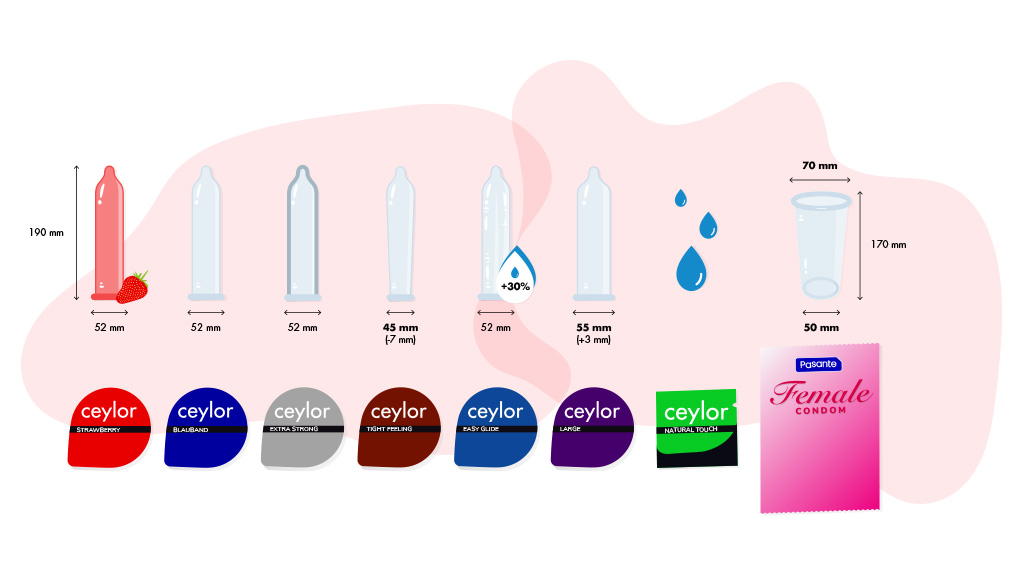
Contraception
Many methods of contraception exist in order to prevent unwanted pregnancies.
Each method has its advantages and disadvantages, so it is up to you to choose a method that suits your age, way of life, health and preferences.
Caution: Contraception does not protect you from sexually-transmitted infections.
The most frequently-used methods are listed below. Do not hesitate to find out more information about them from your doctor or gynaecologist so you can choose the one that works best for you.
Contraceptive pill:
One pill is taken every day for 21 or 28 days, depending on the type of pill. It is a very effective method of contraception, providing the user always remembers to take one pill every day.
Note: The pill cannot be used by women who have liver or cardiovascular disease. Cut down on cigarettes while taking the pill. It is not advised for breastfeeding mothers. The pill reduces menstrual flow and alleviates premenstrual syndrome.
Cost: 6-25 CHF per month on prescription.
Implant
The implant is a small plastic rod inserted under the skin of the upper arm. The procedure is carried out by a doctor under local anaesthetic.
The implant can be worn for up to three years.
Note: The implant can be used during breastfeeding and by women advised not to take medication containing oestrogen. It can cause irregular bleeding or your periods to stop.
Cost: approx. 345 CHF
Coil (IUD)
This is a small device placed inside the womb during your period by a doctor. Both copper coils and hormonal coils are available.
Coils can be worn for up to 3-5 years, depending on the model.
Note: Periods tend to be light or disappear with IUDs that release progestogen, whereas the copper coil is associated with heavier periods.
Cost: 47-229 CHF (according to type of coil)
Contraceptive patch
This is a square measuring 4cm that the user sticks on dry skin (not on the breasts).
You must use one patch every week for three weeks, followed by a break for seven days. Your period will arrive during this time.
Note: Effectiveness levels are comparable to the pill. The patch reduces menstrual flow and alleviates premenstrual syndrome. Its contraindications are identical to those of the combined pill.
Cost: 26 CHF for 3 patches
Male condom
Protects against HIV, STIs and pregnancy.
Condoms are available in various sizes and models and with or without latex, to suit penis size and sexual practices.
Use a water-based lubricant to minimise the risk of a split condom.
For single use.
Cost: 0.50 CHF per condom
Female condom or FEMIDOM
Protects against HIV, STIs and pregnancy.
The female condom is a condom that is inserted into the vagina or anus. It does not contain latex. It is more durable than the male condom and does not break.
It must be put in place before sexual intercourse.
For single use only; it must be changed between partners.
Cost: 1.50 CHF each from Aspasie, or 5.00 CHF in sex shops
Emergency contraception
To avoid an unwanted pregnancy if you have had a risky sexual encounter (split condom, unprotected sex, no contraception), you can take emergency contraception.
You can take the morning after pill up to five days after unprotected sex, but it is preferable and more effective to take it as early as possible.
Cost: 30-50 CHF (10 CHF from family planning clinics). Available over the counter from pharmacies.
If your period arrives late, carry out a pregnancy test (tests cost 20 CHF each from pharmacies or supermarkets).
We advise that you are screened for HIV and STIs six weeks after the sexual encounter in order to check that you have not contracted a sexually-transmitted infection.